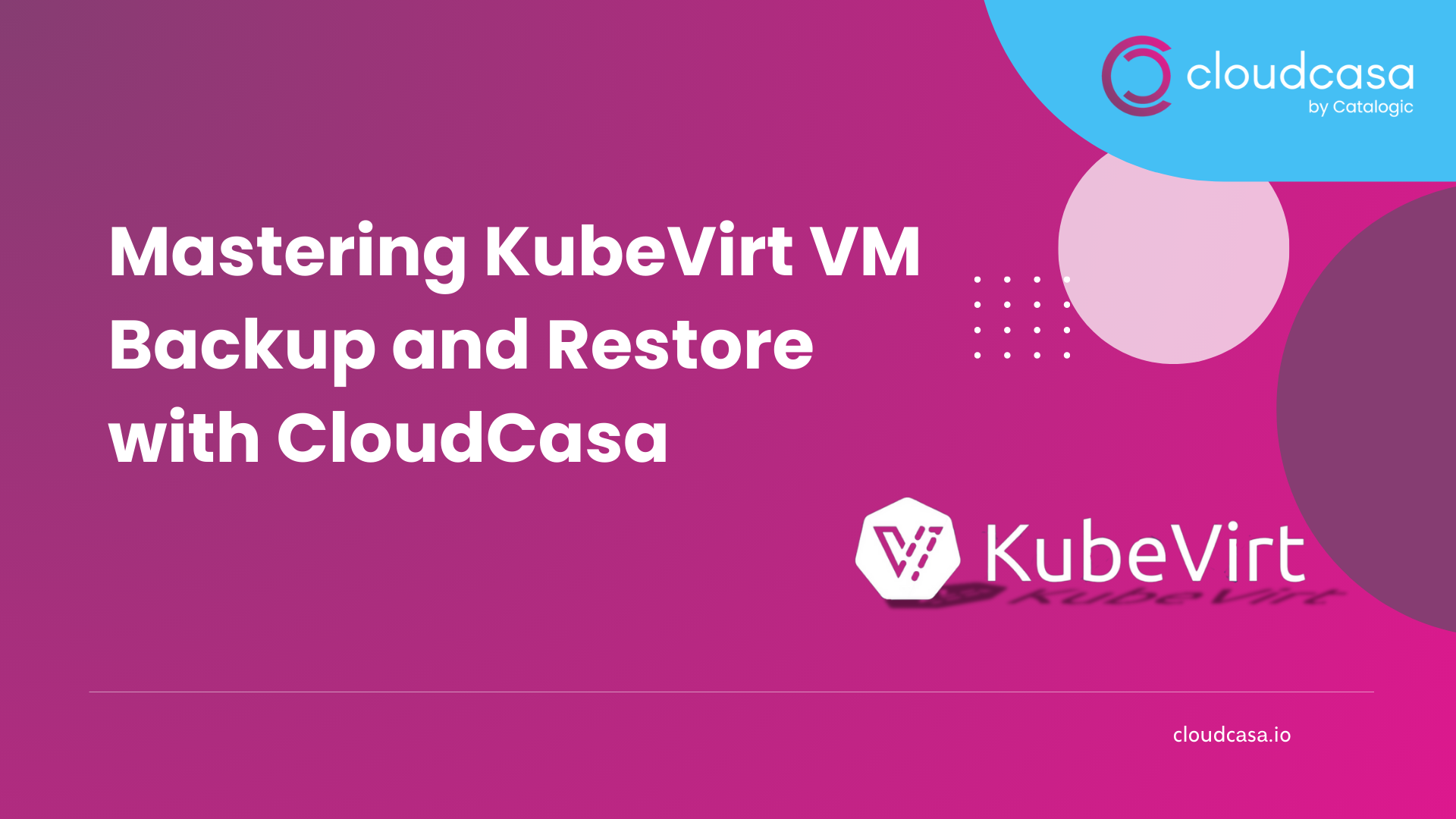In the rapidly evolving world of Kubernetes, managing storage efficiently can be a challenging task. As more organizations adopt Kubernetes for their cloud-native applications, the need for scalable, resilient, and automated storage solutions becomes critical. This is where Rook and Ceph come into play, offering powerful storage capabilities tailored for Kubernetes environments. In this blog, we’ll explore the benefits of using Rook over a direct Ceph deployment within Kubernetes and how CloudCasa can assist with seamless migration of your storage class to Rook.
Understanding Rook and Ceph in Kubernetes
Ceph is a highly scalable distributed storage system that offers object, block, and file storage in a single unified platform. It’s known for its advanced features like data redundancy, self-healing, and high availability. However, deploying and managing Ceph directly can be complex, especially within a Kubernetes cluster. That’s where Rook comes in.
Rook is an open-source cloud-native storage orchestrator that simplifies the deployment, management, and scaling of storage services within Kubernetes clusters. Essentially, Rook acts as an operator that automates the setup and ongoing management of Ceph, making it easier to deploy distributed storage systems in a Kubernetes-native way.
Key Benefits of Rook for Kubernetes Users
Simplified Storage Management
Managing Ceph directly involves multiple steps like setting up monitors, OSDs (Object Storage Daemons), and managing configurations. Rook handles the complexities of deploying and managing distributed storage systems like Ceph, significantly reducing the operational overhead for Kubernetes administrators. Rook provides a “hands-off” approach, enabling automated provisioning and maintenance of Ceph clusters without requiring deep storage expertise.
Automated Lifecycle Management
One of the standout features of Rook is its ability to automate storage lifecycle management. Rook automates storage provisioning, scaling, upgrades, and even migration—ensuring that your storage infrastructure is always optimized and highly available. This automation extends to tasks like monitoring storage health, balancing data, and recovering from failures, making it easier for teams to focus on application development rather than infrastructure maintenance.
Flexibility and Scalability
Rook provides flexibility by allowing users to easily provision different storage types (block, object, file) based on application requirements. Rook’s tight integration with Kubernetes ensures that storage can scale seamlessly alongside your applications. Whether you’re scaling out to accommodate a growing database workload or need to quickly spin up storage for a new microservice, Rook offers a highly flexible solution.
Cloud-Native Integration
Designed to be cloud-native, Rook leverages Kubernetes’ native capabilities for scheduling, orchestration, and resource management. This means that Rook fits naturally into cloud-based deployments, enabling organizations to take advantage of Kubernetes’ strengths in dynamic scaling and automated resource allocation.
Enhanced Ceph Integration
While Rook can manage various storage backends, its tight integration with Ceph is one of its strongest benefits. By using Rook to deploy Ceph, organizations can access advanced Ceph features like data redundancy, self-healing, and efficient snapshotting—without the complexity of managing Ceph directly. This integration is especially valuable for organizations looking to build robust, scalable storage solutions on top of Kubernetes.
How CloudCasa Enhances Storage Migration to Rook
Migrating to Rook from an existing storage solution can be daunting, especially when dealing with complex storage classes and persistent volumes. This is where CloudCasa by Catalogic comes in, providing a Kubernetes-native data protection and migration solution that simplifies the transition to Rook.
CloudCasa’s Migration Capabilities:
- Automated Storage Class Migration: CloudCasa helps you migrate workloads between different storage classes, enabling you to transition from your existing Ceph or other storage solutions to Rook with minimal downtime. This is particularly useful for organizations looking to consolidate their Kubernetes storage strategy.
- Application-Aware Backups: With CloudCasa, you can create application-consistent backups of your Kubernetes workloads, including stateful applications that use Ceph for persistent storage. These backups can be restored to a new Rook-managed storage class, simplifying the migration process.
- Cross-Cluster and Cross-Cloud Migration: CloudCasa supports cross-cluster and cross-cloud migrations, allowing you to replicate your data from one Kubernetes cluster to another, even if they use different storage backends. This flexibility is key when migrating to Rook, especially in hybrid or multi-cloud environments.
- Disaster Recovery with Rook: Beyond just migration, CloudCasa provides robust disaster recovery capabilities by backing up and restoring entire Kubernetes clusters, ensuring that your data remains protected, even in Rook-managed storage environments.
Why CloudCasa and Rook are a Perfect Pair for Kubernetes
By leveraging the automation capabilities of Rook and the powerful data protection and migration features of CloudCasa, Kubernetes users can achieve a robust, scalable, and easy-to-manage storage solution. Rook takes care of the underlying storage complexity, while CloudCasa ensures that your data is protected, recoverable, and easily migratable.
Key Takeaways:
- Rook simplifies the management of Ceph and other storage solutions within Kubernetes.
- Rook’s cloud-native integration and automation capabilities significantly reduce storage management overhead.
- CloudCasa enhances the benefits of Rook by providing seamless migration, backup, and disaster recovery for Kubernetes environments.
- Together, Rook and CloudCasa offer a comprehensive solution for Kubernetes storage management and data protection.
Empowering Kubernetes with CloudCasa and Rook: A Perfect Synergy
Whether you’re already using Ceph or exploring Rook as your next Kubernetes storage solution, CloudCasa can help you streamline your migration and data protection strategy. To learn more, visit our CloudCasa website or contact us at casa@cloudcasa.io.
Be sure to see our KB on how to configure a Rook Ceph CSI driver before running a backup.
By adopting Rook with the power of CloudCasa, Kubernetes administrators can take a major step towards simplifying their storage infrastructure and optimizing their data management workflows. Are you ready to elevate your Kubernetes storage game? Reach out today to discover how CloudCasa can assist with your migration to Rook!

